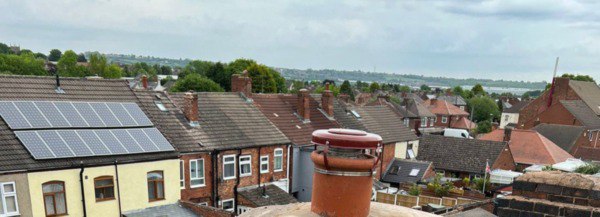The Environmental Impact of Sustainable Roof Inspections
Introduction: In an era where environmental sustainability is a global priority, even seemingly routine tasks like roof inspections can significantly impact our planet. Roof inspections are essential for maintaining the health and longevity of your roof, but they also offer an opportunity to minimise your carbon footprint. In this blog post, brought to you by HJT Roofing Gainsborough, we will explore the environmental impact of sustainable roof inspections and how they contribute to a greener future.
The Importance of Roof Inspections
Roof inspections are a critical part of proactive roof maintenance. They help identify and address issues early, preventing costly and environmentally taxing roof repairs or replacements. Regular inspections can extend the lifespan of your roof and reduce the consumption of roofing materials, such as shingles, membranes, and insulation.
Sustainable Roof Inspections: How Do They Make a Difference?
- Reduced Waste: Sustainable roof inspections prioritise preventive measures, addressing minor issues before they escalate into major problems. This approach reduces the need for extensive roof repairs or replacements, resulting in less landfill waste.
- Energy Efficiency: A well-maintained roof with proper insulation can improve energy efficiency in your building. This means reduced energy consumption for heating and cooling, leading to lower greenhouse gas emissions and a smaller carbon footprint.
- Resource Conservation: Sustainable roof inspections promote resource conservation by preserving existing materials. Instead of replacing the entire roof, repairs or improvements can be made to the existing structure, saving valuable resources.
- Stormwater Management: Sustainable roof inspections assess the condition of drainage systems, gutters, and downspouts. Proper functioning of these components prevents water runoff and potential flooding, reducing the environmental impact on local ecosystems.
- Reflective Roofing Materials: Sustainable roof inspections can recommend using reflective roofing materials, such as cool roofing or white membranes. These materials reduce the heat island effect, lower cooling energy requirements, and mitigate urban heat buildup.
- Solar Readiness: Sustainable roof inspections may identify opportunities for solar panel installations. Solar-ready roofs can harness clean, renewable energy and reduce reliance on fossil fuels, contributing to a greener energy grid.
- Recycling Practices: Sustainable roof inspection companies often follow eco-friendly recycling practices. They salvage materials like metal flashing and recycle old roofing materials, minimising waste and conserving resources.
Choosing a Sustainable Roof Inspector
When selecting a roofing inspector, consider the following factors to ensure they align with sustainable practices:
- Certifications: Look for inspectors with industry-recognised certifications and affiliations that promote sustainability and green building practices.
- Local Expertise: Inspectors with local knowledge understand your area’s environmental conditions and regulations, allowing for more effective and sustainable solutions.
- Transparent Practices: Choose an inspector who communicates transparently about their sustainable practices, from waste reduction to recycling initiatives.
Conclusion: Sustainable roof inspections are more than just routine maintenance; they are an opportunity to impact the environment positively. By prioritising preventive measures, resource conservation, and energy efficiency, sustainable roof inspections help reduce waste, lower greenhouse gas emissions, and contribute to a more sustainable future.
Call us on: 01427 802 298
Click here to find out more about HJT Roofing Gainsborough
Click here to complete our contact form and see how we can help with your roofing needs.

